www.lydiacrouse.com
Artist BioLydia Crouse (b.1995) is a visual artist currently living and working in New York City.
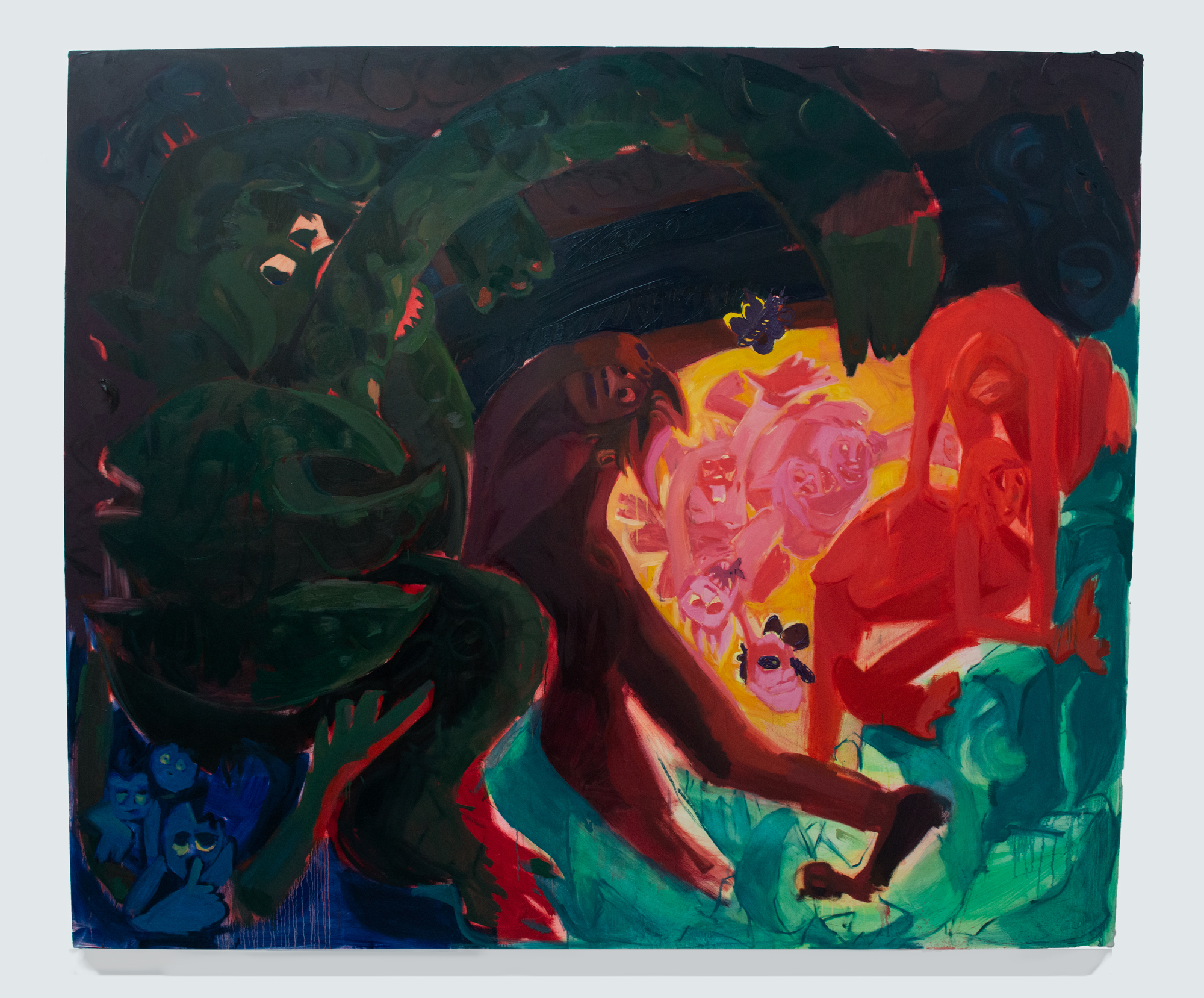
i could smell salt interrupting it telling me about its life, 2020
oil, acrylic and crayon on canvas
76" × 90"

i could smell salt interrupting it telling me about its life, 2019
crayon on newsprint
17" × 11"
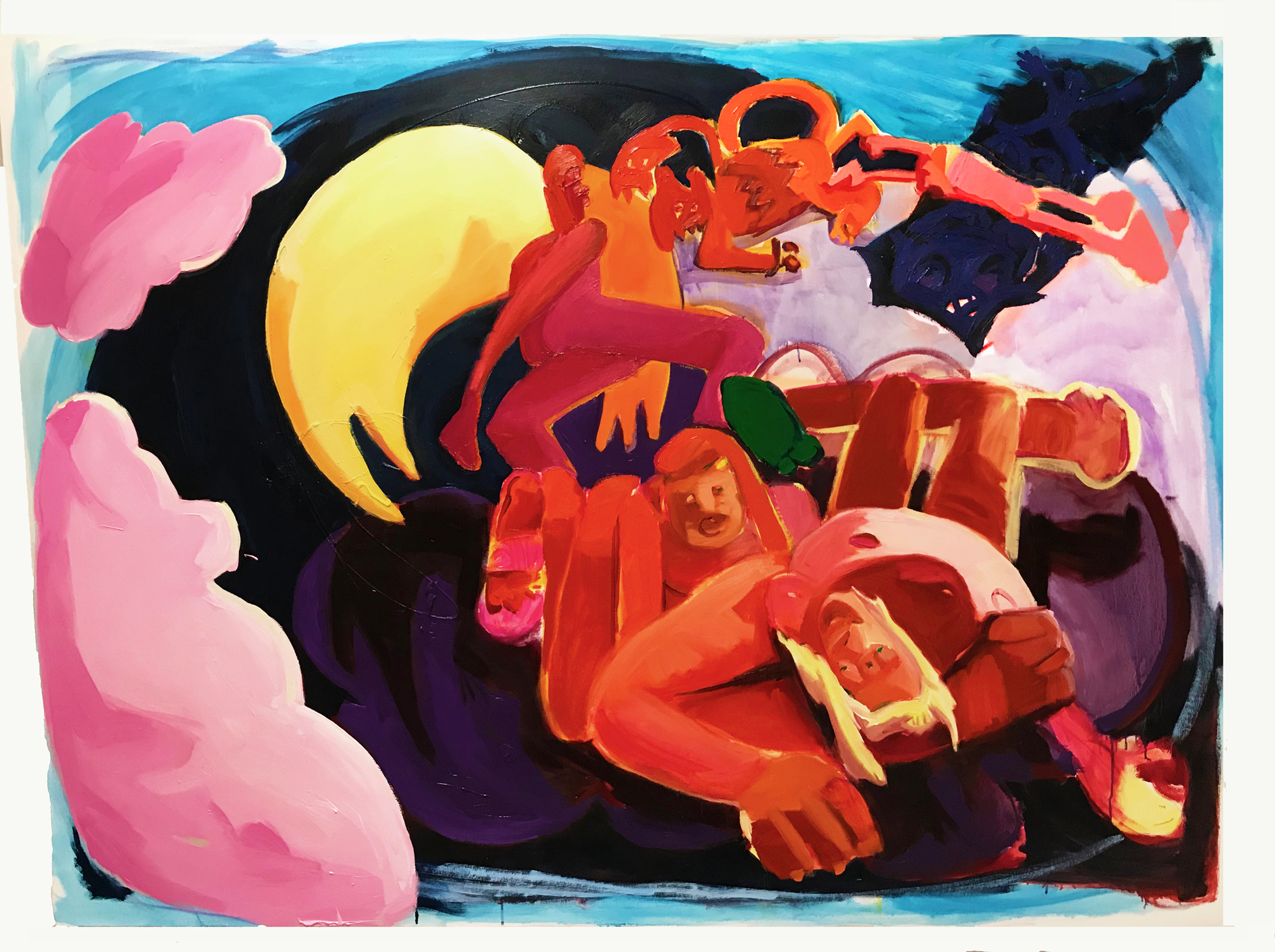
we wanted this challenge but it was such a funny night i went to bed, 2019
oil, acrylic and crayon on canvas
61" × 82"
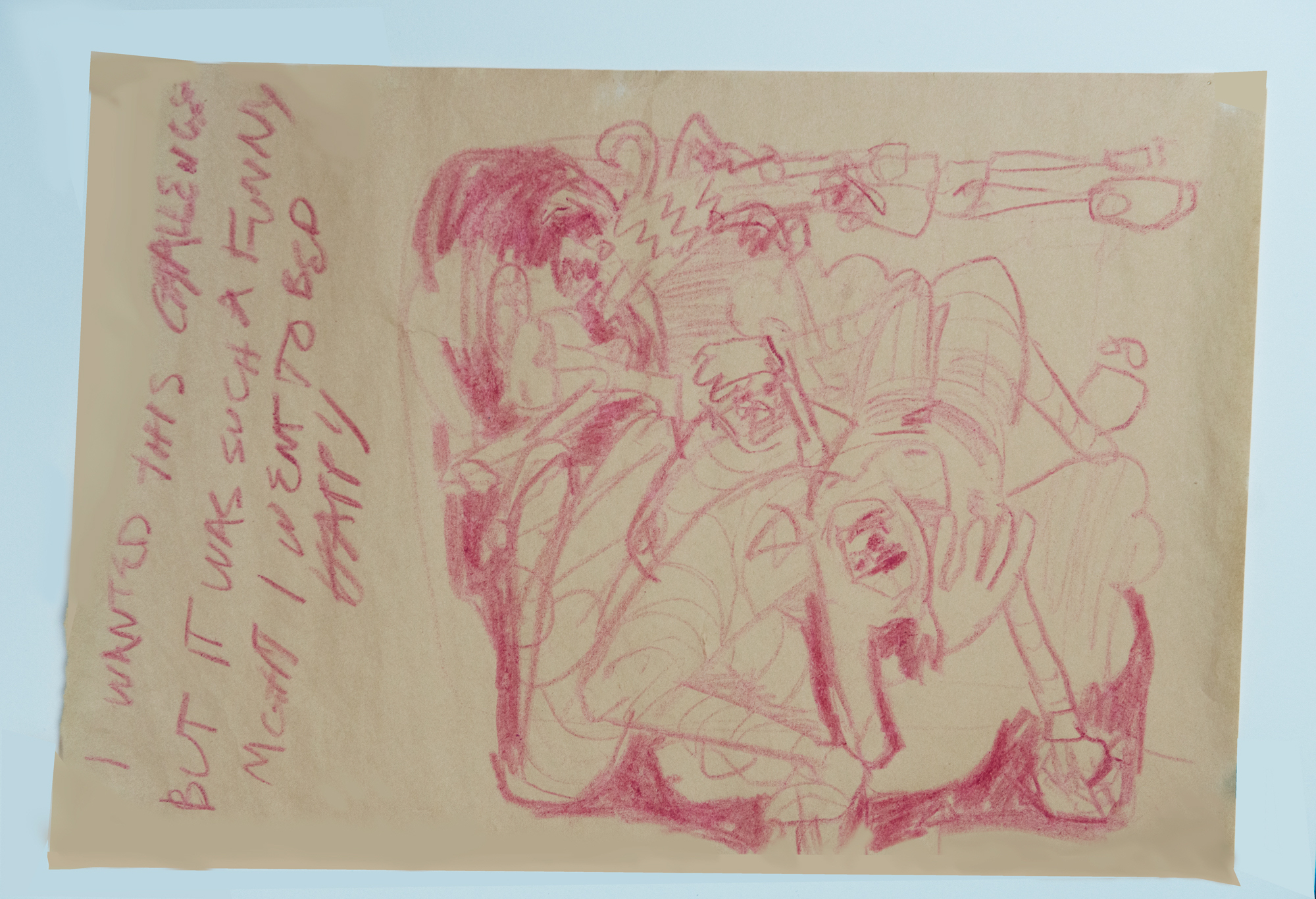
we wanted this challenge but it was such a funny night i went to bed, 2019
crayon on newsprint
11" × 17"

the understudy for an affair seances and other spells, 2019
oil, acrylic and crayon on canvas
76" × 90"
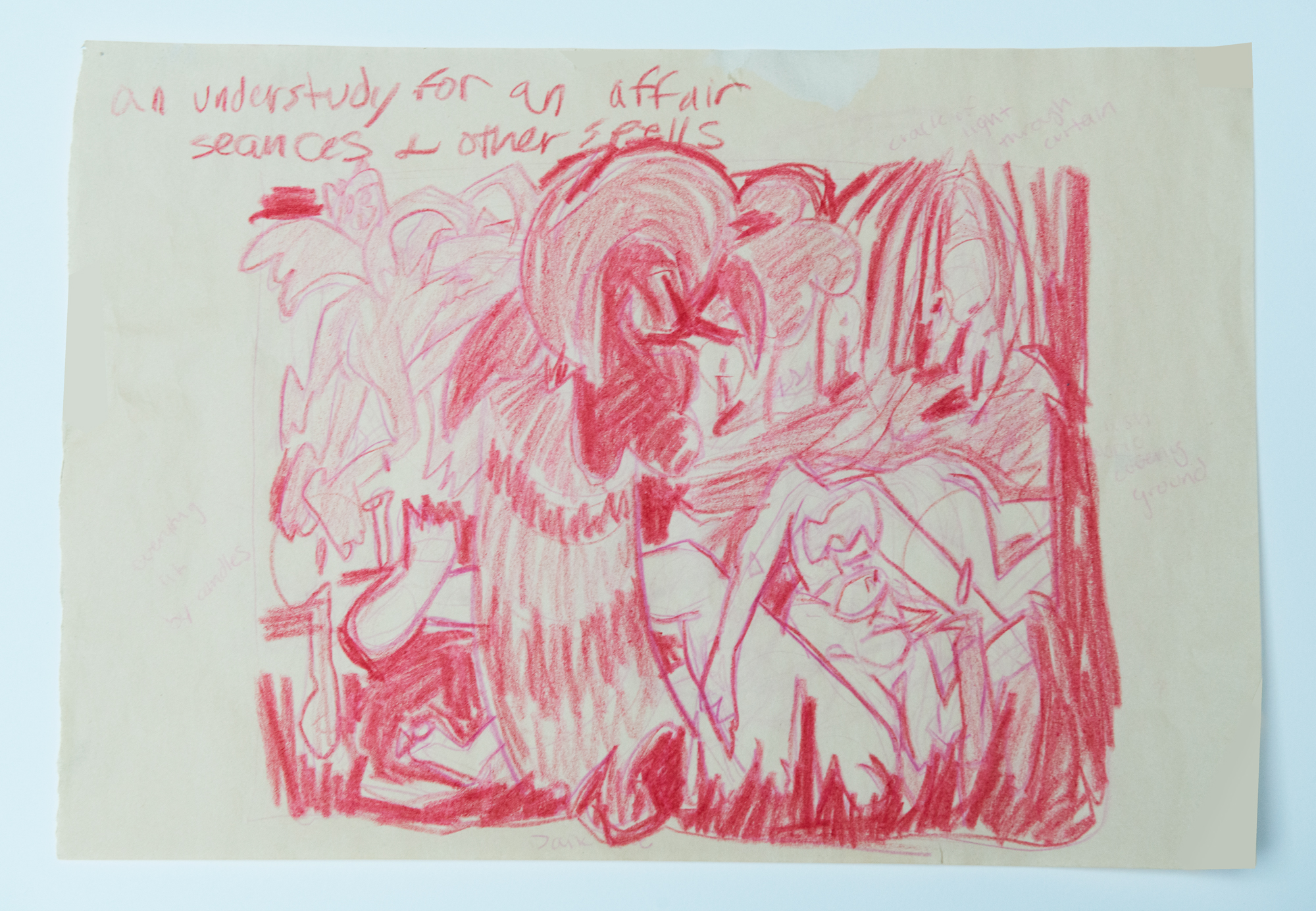
the understudy for an affair seances and other spells, 2019
crayon on newsprint
11" × 17"
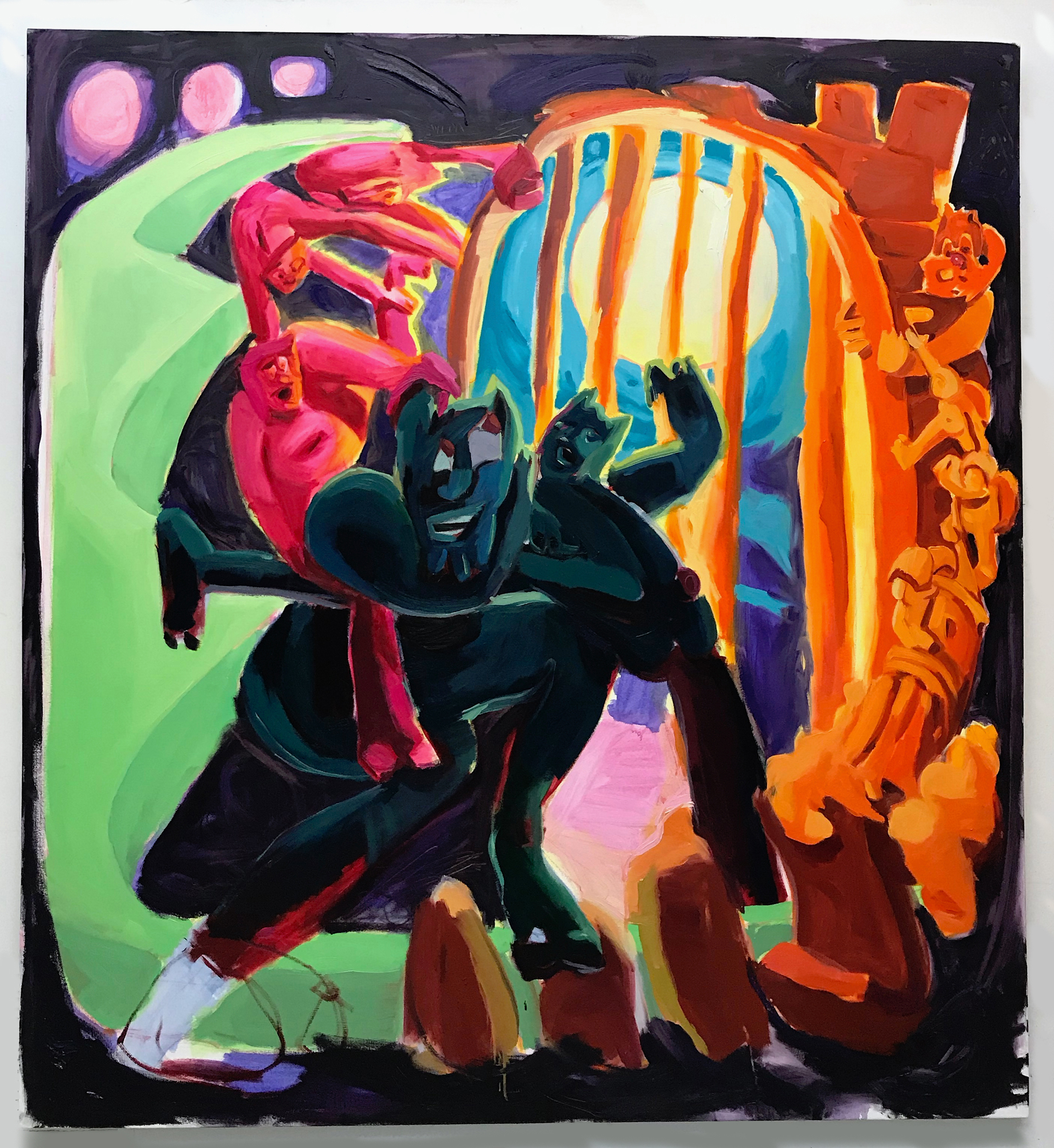
an actor all the way through we landed on the moon, 2019
oil, acrylic and crayon on canvas
88" × 66"
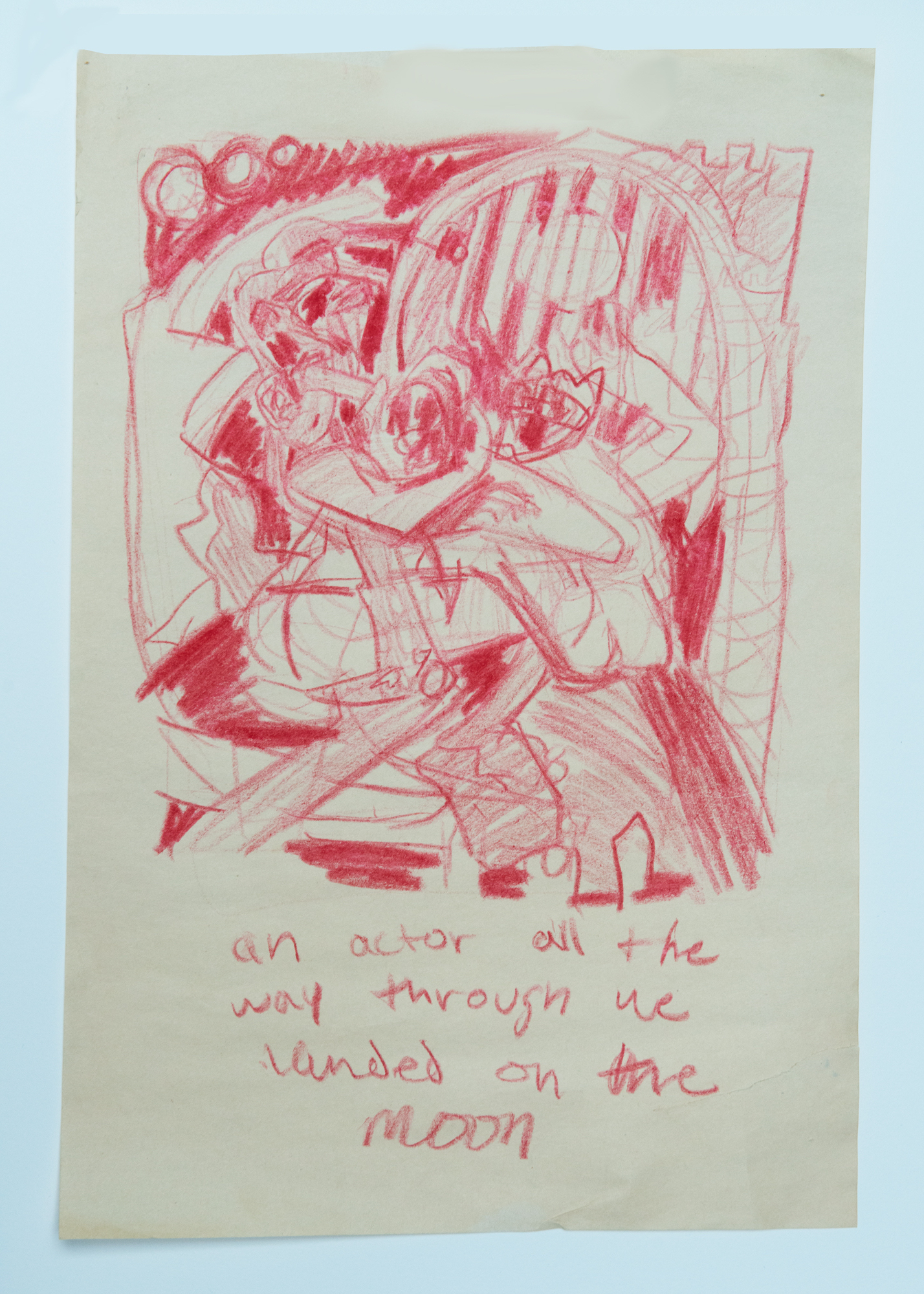
an actor all the way through we landed on the moon, 2019
crayon on newsprint
17" × 11"
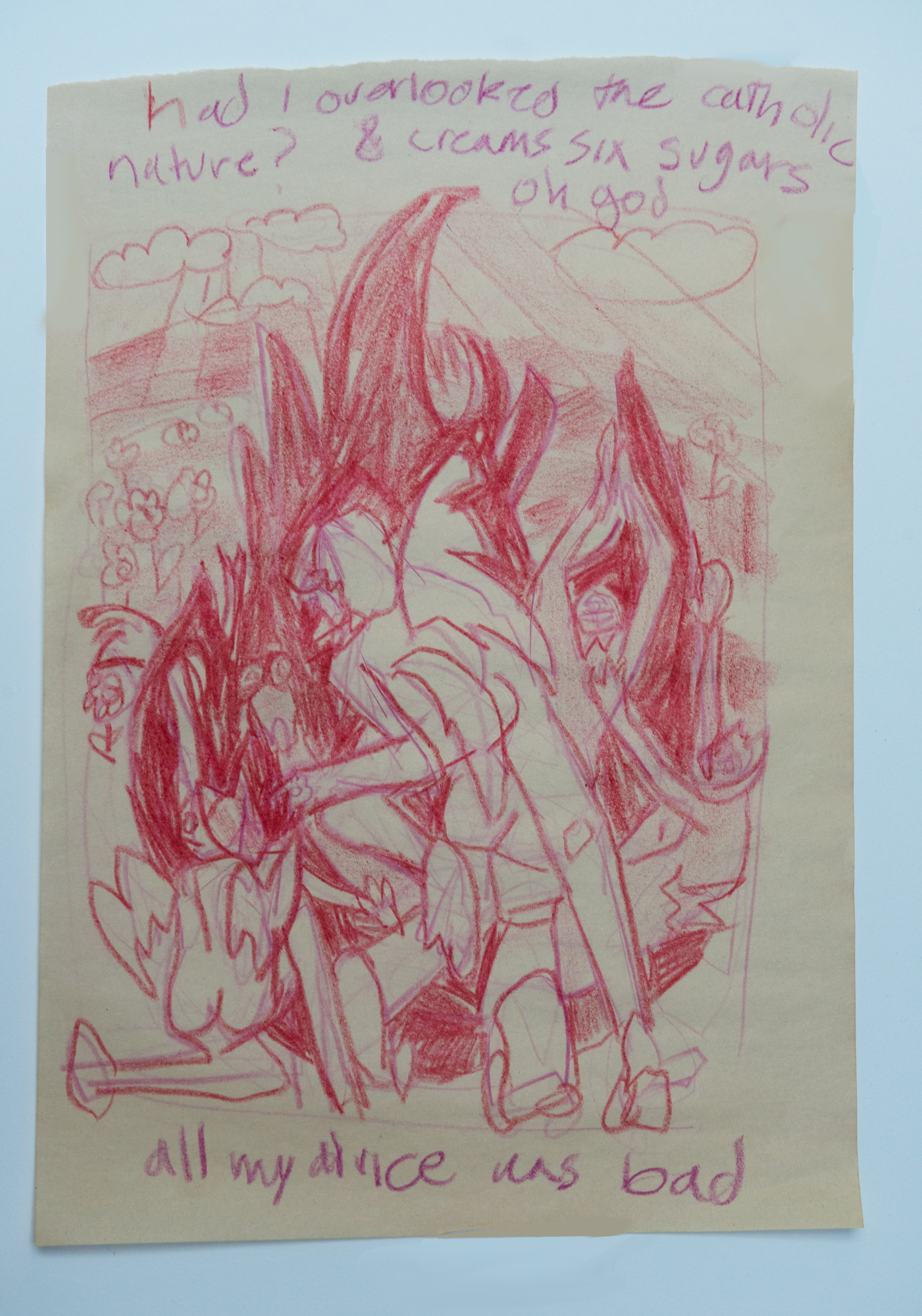
had i overlooked their catholic nature? 8 creams six sugars oh god. all my advice was bad, 2019
crayon on newsprint
17" × 11"
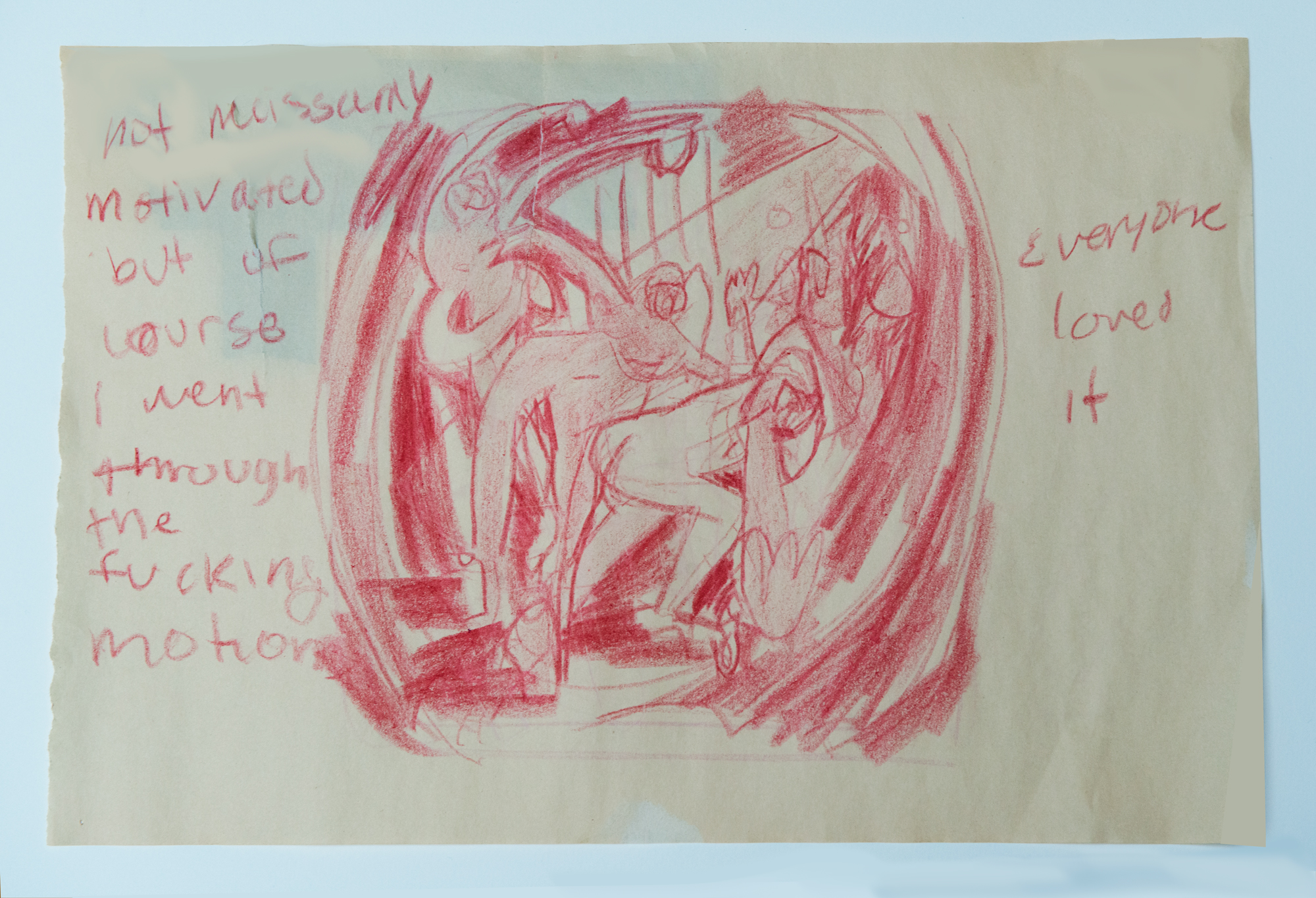
not necessarily motivated but of course I went through the fucking motions… everyone loved it, 2019
crayon on newsprint
11" × 17"
Artist Statement
Lydia Crouse’s painting practice represents a kind of cosmological exploration, beginning by acknowledging previous structures that have scripted her ideology. From text, to drawing, to paint she re-scripts her everyday inner monologues into large figurative dramas. She begins by extracting phrases from her recent journals—usually recordings of relations suggesting vulnerability, anxiety, and hope. These become cues for composing speculative narratives that reside somewhere between the Ode and Epic. Her concerns as a millennial human exist as an undercurrent for the imagery she renders: figures intertwining in spaces where chaos and pleasure compete intimately on canvas. Here it’s possible for the animal, cyborg and demon to climax in collective revelation.
Lydia paints to conceive a counternarrative where the characters, landscape, architecture and medium itself perform in hopes of animating the critical imagination and curiosity of the viewer. She continuously draws on theories of post-humanity, dark existential humor, Christian mysticism, and obnoxious levels of affection in order to subvert dominant myths and formulate better ones. By finally constructing scenes of fiction she works to set the stage for a spectator to consider not only the absurdity of our human endeavor, but perhaps, also the possibility of love on the eve of apocalypse.